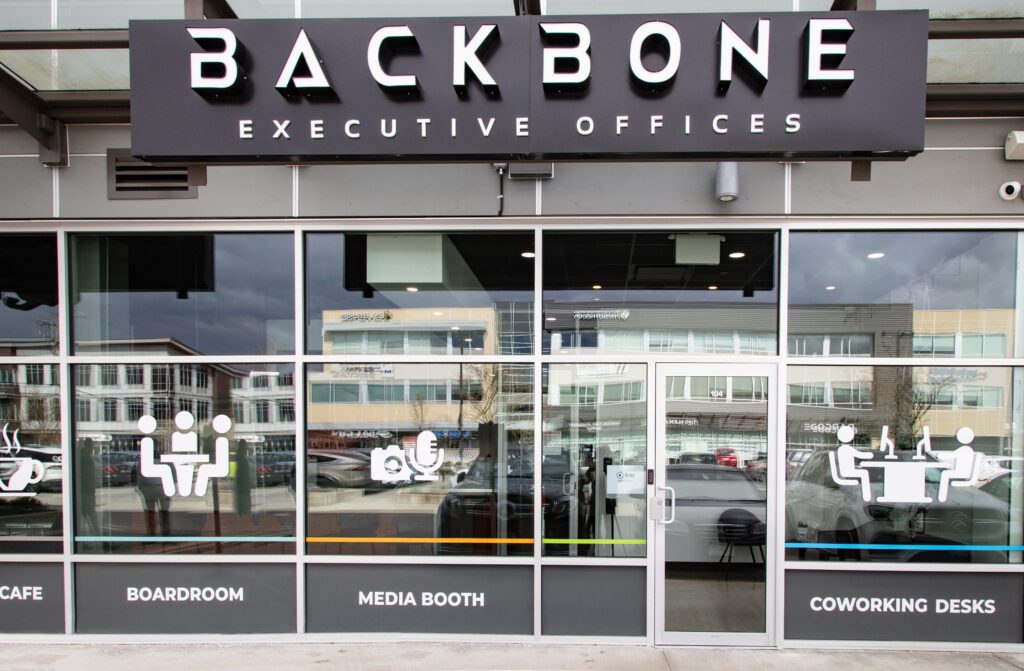
In the fast-paced business world, meetings play a vital role in collaboration, decision-making, and driving progress. But let’s be honest, not all meetings are created equal.
To make the most of everyone’s time and expertise, it’s crucial to be a pro at leading productive meetings that actually get things done.
In this guide, we’ll share practical tips and strategies to help you ace the art of running effective meetings. Whether you’re a seasoned pro or new to the game, join us as we unlock the secrets to mastering the art of the productive meeting.
Get ready to boost your meeting game and achieve remarkable results. Let’s dive right in!
Tips For Leading a Productive Meeting
The following 8 tips will ensure your meeting goes as planned, and you’ll walk out feeling accomplished.
1) Start with a fun icebreaker

The first few minutes of a meeting generally set the tone for the rest of it. That’s why if you want to lead a productive meeting, you need to make sure that your participants are comfortable and energized.
Icebreakers are a great way to set the tone and create a positive atmosphere at the start of a meeting.
These brief activities or questions may seem simple, but they have a powerful impact on the overall dynamics of the group and can determine right off the bat how productive and effective a meeting might be. It all depends on the people!
Icebreakers help to break down barriers, foster connections, and create a sense of camaraderie among participants.
By engaging in lighthearted conversations or activities, team members become more comfortable, open, and willing to share their ideas and perspectives. Icebreakers can also inject energy and enthusiasm into the meeting, setting a positive tone that carries through the rest of the session.
You can choose anything that will get everyone talking, whether a game or just an interesting conversation starter.
Some examples of good icebreaker activities are:
- Two Truths and a Lie: Have each participant share two true statements about themselves and one false statement. The rest of the team will try to guess which statement is the lie. This activity encourages team interaction, sparks curiosity, and helps break the ice in a fun way.
- Bucket List Destinations: Ask each participant to share one dream destination they would love to visit someday. It can be a place they’ve always wanted to explore or a unique travel experience they desire. This ice breaker not only allows team members to share their aspirations but can also foster interesting conversations and connections beyond work-related topics.
Remember, the goal of ice breakers is to create a relaxed and comfortable atmosphere, encourage conversation, and build rapport among team members. Choose an ice breaker that suits the nature of your meeting and the dynamics of your team.
2) Set an agenda

The secret ingredient on how to lead a productive meeting lies in having a solid agenda. When you have a well-crafted agenda, it sets the stage for success.
By setting a clear and comprehensive agenda, you provide structure and purpose to the meeting, ensuring that everyone is on the same page from the moment they step into the room.
An agenda acts as a roadmap, outlining the topics to be discussed, the goals to be achieved, and the allocated time for each item.
This not only helps keep the meeting focused and on track, but it also empowers participants to come prepared, ready to contribute and make the most of their time together.
With an agenda in place, distractions are minimized, tangents are avoided, and the meeting becomes a streamlined and purposeful collaboration that drives results. It sets expectations, encourages active engagement, and allows for efficient decision-making.
Ultimately, a well-structured agenda is the secret weapon that transforms an ordinary meeting into a productive powerhouse.

An example of a more formal meeting agenda could look something like this, or it could of course be much more casual:
Meeting Title: [Insert Meeting Title]
Date: [Insert Meeting Date]
Time: [Insert Meeting Time]
Location: [Insert Meeting Location]
- Welcome and Introductions:
- Briefly welcome all attendees.
- Provide a quick round of introductions, if necessary.
- Review of Previous Meeting Minutes:
- Discuss and approve the minutes from the previous meeting.
- Address any action items or follow-ups from the previous meeting.
- Main Agenda Items:
- [Agenda Item 1]:
- Provide a brief overview of the item.
- Discuss relevant details, considerations, or updates.
- Encourage input and discussion from participants.
- Assign action items or tasks, as needed.
- [Agenda Item 2]:
- Follow the same structure as Agenda Item 1 for each subsequent item.
- [Agenda Item 1]:
- Open Floor / General Discussion:
- Allow time for participants to bring up any additional topics, questions, or concerns.
- Facilitate open discussion and collaboration among attendees.
- Action Items and Next Steps:
- Summarize the action items, tasks, or decisions made during the meeting.
- Clarify responsible parties and due dates for each action item.
- Closing Remarks:
- Thank participants for their contributions and attendance.
- Mention any important upcoming events or deadlines.
- Confirm the date, time, and location of the next meeting, if applicable.
- Adjournment:
- Declare the meeting officially adjourned.
Feel free to adapt and customize this template to fit the specific needs and structure of your meetings.
3) Use your time wisely

One of the biggest problems with conducting a meeting is that there are so many different things to cover and not enough time to do it.
This can be especially hard if you have a lot going on within your business or company at the moment. It might feel like one thing will take an hour, but then another topic pops up, which takes another hour to discuss.
When leading a meeting, make sure everyone knows when it is time for each topic, so they understand how much time they will have for talking about certain things.
Start the meeting on time or 5 minutes early. Also, know when to cut short the meeting.
4) Create a safe environment

Fostering a safe environment where employees feel comfortable sharing their thoughts and ideas is paramount to leading a productive meeting.
When individuals feel safe to voice their opinions, it unlocks a wealth of creativity, collaboration, and problem-solving potential.
By creating a culture of psychological safety, where everyone feels valued and respected, participants are more likely to contribute openly and honestly. This exchange of diverse perspectives fuels innovation and enables more effective decision-making.
When employees feel comfortable expressing their opinions without fear of judgment or retribution, it fosters trust and psychological well-being, resulting in increased engagement and motivation.
Encouraging open dialogue, active listening, and constructive feedback cultivates a space where everyone’s input is valued and considered.
In such an environment, a productive meeting becomes a platform for collective growth, where ideas flourish, and collaborative solutions emerge.
5) Keep it short and sweet

Let’s talk about the one thing everyone hopes for when it comes to meetings: keeping it short and sweet.
Time is precious, and by respecting everyone’s busy schedules, you show your commitment to efficiency. Long, never-ending meetings can drain energy, kill focus, and zap productivity.
Encourage folks to get to the point (nicely), sharing their thoughts in bite-sized brilliance.
When meetings are crisp and time-conscious, the vibe is much more energetic. Participants stay engaged, conversations stay on track, and decisions get made quickly.
The goal is to maximize results in minimal time, leaving everyone feeling good and ready to conquer their next tasks with a productivity superhero cape on.
6) Ask for feedback

How else can you ensure you’re leading a productive meeting? Ask!
After each meeting, take the opportunity to gather insights and perspectives from participants. Asking for feedback demonstrates a commitment to continuous improvement and fosters a culture of open communication.
By understanding what worked well and areas that could need improvement, you can fine-tune your meeting approach and create an even better environment for collaboration.
Consider asking participants questions such as:
- What aspects of the meeting were most effective in driving discussion and decision-making?
- Were there any areas where you felt the meeting could have been more efficient or focused?
- What was your favourite part of the meeting?
- How can we further improve future meetings to enhance productivity and engagement?
By actively listening to participant feedback, you can adapt and refine your meeting strategies, making future meetings more productive, impactful and engaging.
7) Utilize Technology

Embracing technology in your meetings can be a game-changer when it comes to leading a productive meeting, especially if some or all of your participants are joining remotely.
By harnessing the power of collaborative platforms, project management software, and video conferencing tools, you can create a seamless and efficient meeting experience.
Collaborative platforms allow participants to share and collaborate on documents in real-time, enabling effective collaboration even when team members are not physically present in the same location.
Project management software helps track tasks, deadlines, and progress, keeping everyone accountable and ensuring that discussions stay focused on actionable items.
Video conferencing tools bring remote teams together, facilitating face-to-face communication and fostering a sense of connection.
Leveraging these technological resources enhances communication, streamlines workflows, and eliminates the limitations of physical boundaries.

Some examples are:
- Collaborative Platforms: These tools enable real-time collaboration on documents, spreadsheets, and presentations. Multiple participants can work together simultaneously, making it easy to share ideas, provide feedback, and iterate on projects.
- Project Management Software: These platforms help teams stay organized by creating and tracking tasks, setting deadlines, and visualizing project progress. These tools allow you to assign responsibilities, monitor timelines, and keep everyone aligned towards meeting objectives.
- Video Conferencing Tools: These applications facilitate virtual face-to-face meetings, regardless of participants’ locations. Video conferencing tools enable seamless communication, screen sharing, and collaborative discussions, fostering engagement and connection among remote team members.
- Note-Taking and Collaboration Apps: These platforms provide digital spaces for taking meeting notes, capturing ideas, and organizing information. These apps often support features like tagging, sharing, and syncing across devices, making it easy to access and collaborate on meeting-related content.
- Polling and Survey Tools: Services like these allow you to gather real-time feedback, conduct polls, or run surveys during meetings. These tools enhance engagement, provide valuable insights, and enable participants to contribute their opinions or preferences.
- Mentimeter
- Poll Everywhere
- Google Forms
- Virtual Whiteboard Tools: Applications like these offer virtual canvases for visual brainstorming, mind mapping, and collaborative ideation. These tools enable participants to contribute and visualize ideas simultaneously, fostering creativity and problem-solving.
8) Choose a distraction-free environment

Hosting a meeting in an unprofessional or public space can have a significant impact on the quality and productivity of the gathering.
Just picture trying to focus on important discussions while surrounded by distractions, noise, or a lack of privacy. The environment sets the stage for effective communication and collaboration, and an unprofessional or public setting can throw off the balance.
It becomes harder for participants to stay engaged and contribute meaningfully. The absence of dedicated meeting amenities and resources can also hinder productivity.
Without the right equipment, comfortable seating, or necessary technology, it becomes a challenge to share information or access essential resources.
To ensure successful meetings, it’s crucial to choose a space that exudes professionalism, provides privacy, and offers the supportive infrastructure needed to foster a productive environment.
We’ve got you covered-

At Backbone Coworking & Executive Offices, we understand the importance of providing professional meeting spaces that set the stage for success.
With multiple versatile meeting rooms and boardrooms available for rent, we have the perfect solution to cater to your unique needs:
- 1 smaller meeting room (seats 6)
- A larger designer boardroom (seats 8)
- A meeting room with a world-class Golf Simulator (seats 4)
- A media/podcast room (or the Zoom Room as we’ve coined it) is perfect if you’re hosting a fully virtual meeting or a podcast and need a quiet space with the right tech (seats 1)
- Our event space is available if you need to host a large meeting/workshop/event (fits approx 30-40 people)
Ready to host your next productive meeting in a professional space? Feel free to contact us and we’ll be more than willing to assist!
Share this:
Want a tour of the space?
Our community of go-getter entrepreneurs could use another one like you! Shoot us a message if you have any questions or want to book a showing.
Backbone Coworking & Executive Offices
104-32615 S Fraser Way
Abbotsford, BC, V2T 1X8
Phone: 236-233-3200
